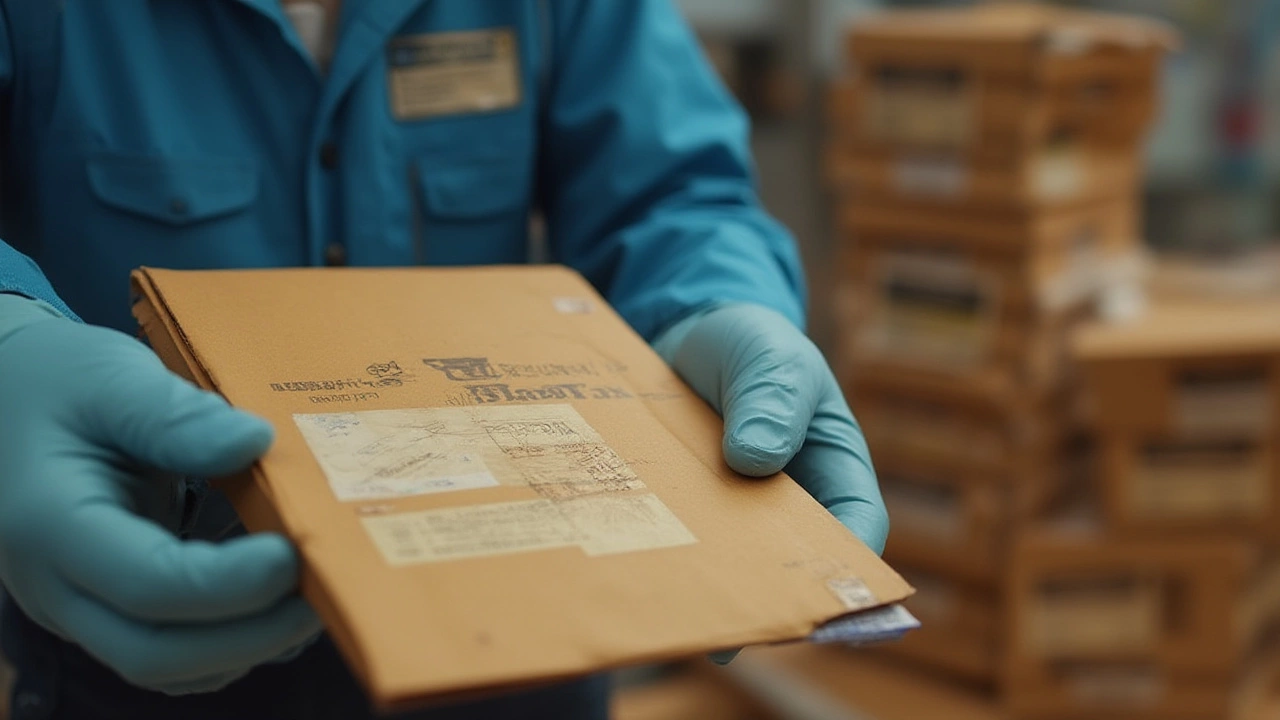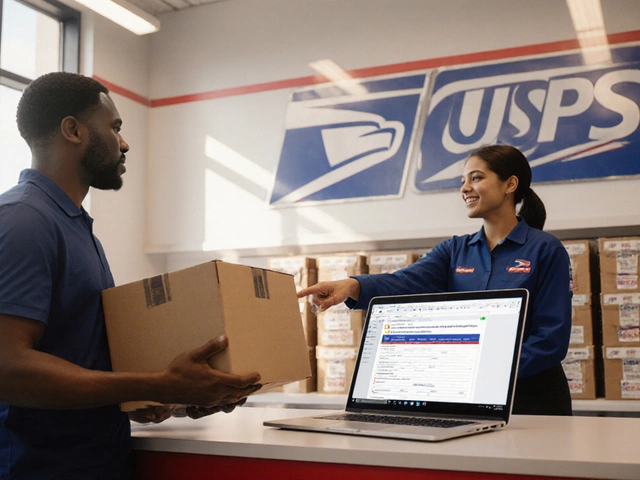Sometimes, regular post just doesn’t cut it. You’re holding a contract, a heartfelt letter, or maybe even a cheeky birthday card that absolutely, positively needs to reach someone tomorrow. What can you do? When it comes to getting a letter delivered next day, the maze of services, speeds, and pricing can feel overwhelming. What’s the difference between next day, express, overnight—aren’t they all the same? Not exactly. And yes, a missed delivery could mean a lost business deal or a furious relative. The stakes feel higher when time is tight, so let’s get straight to the nuts and bolts of next day letter delivery and everything you should know before booking a service.
Your Next Day Delivery Options—Who Does What, and How Fast?
First things first, let’s talk options. You’re probably thinking of the big players: Royal Mail, DHL, FedEx, UPS, and the network of local couriers that promise to zip your precious papers from point A to B at warp speed. Each carrier sets their own rules, cut-off times, and price brackets—it’s not always as straightforward as their adverts make it sound.
Royal Mail’s Special Delivery Guaranteed by 1pm is the go-to for much of the UK. They promise guaranteed next day delivery (even on Saturdays if you ask), tracking at every step, and insurance up to £750 as standard, with options for higher value items, too. But here’s the thing: miss the daily cut-off—usually 4 or 5pm at most post offices—and your letter sleeps over at the counter. Weekends, bank holidays, and remote locations can add a wrinkle, pushing delivery to the next working day. Still, if you get your paperwork in on time, it’s a sturdy, well-trusted choice.
DHL Express and FedEx offer similar next day services, but with a twist: they shine for international or long-distance express. Imagine you need a document to land in Paris or Dublin by noon—these giants are your answer. They come at a price: international next day courier services easily top £40-£60 for a single envelope, but you get tracking, signature-on-delivery, and proper reliability.
Local and regional couriers—like CitySprint or Absolutely Courier in London—also offer overnight letter delivery, with some able to collect right from your door. They’re especially useful for urgent in-city trips, and you’ll often get more flexibility with pick-up, evening deliveries, or out-of-hours support. These guys can sometimes save your bacon when national networks are maxed out on holidays or during strikes.
You can see how the main options stack up in this handy table:
| Carrier | Typical Cut-off Time | Delivery Guarantee | Starting Price | Tracking & Insurance | International Option |
|---|---|---|---|---|---|
| Royal Mail Special Delivery | 4-5pm (most POs) | By 1pm next day | £7.35 | Yes, £750+ insurance | Limited (select destinations) |
| DHL Express | Some depots 7pm | Next day AM (UK/EU/USA) | £30 (UK), £50+ (intl) | Yes, variable insurance | Yes, to 220+ countries |
| FedEx Priority Overnight | Varies by region | By 10:30am-12noon | £20+ (UK), £40+ (intl) | Yes, £100+ insurance | Yes |
| CitySprint, Local Couriers | Late & flexible | Next day—sometimes same day | £10+ (depends distance) | Usually yes | Rare, mostly UK only |
Bear in mind: price jumps fast if you book after-hours, need Saturday/Sunday delivery, or send internationally. Always check the fine print. Set realistic expectations—guaranteed by 1pm means precisely that, not “as early as possible in the morning.” Anything sent after collection times rolls over to the following next working day.
My recommendation? For routine UK letters, you can’t go wrong with next day letter delivery via Royal Mail Special Delivery if you’re near a post office, mind the clock, and want a balance of cost, speed, and reliability. For cross-border must-arrive-tomorrow jobs, DHL and FedEx remain kingpins. If you’re sending inside a city and the recipient really can’t wait, check out local specialized couriers.

How to Prepare Your Letter for a Fast, Smooth Delivery
Speed is king, but the devil’s in the details. Even the fastest courier can’t save you from silly slip-ups—incorrect addresses, loose packaging, or forms left unsigned. First up: clarity. Is the recipient’s address complete, legible, and up-to-date? Forgetting a building name or missing a flat number is a classic pitfall. Write the address in block letters or print a label—machines scan them, and people make fewer mistakes reading them.
Next, decide on your envelope. Most next day services like Royal Mail Special Delivery or DHL let you use your own sturdy envelope. Go for something non-flimsy so it doesn’t go through the sorting belt looking worse for wear. Anything bulky or thicker than a few sheets of paper? Use a small padded envelope for extra protection. If you’re sending international, double-check rules about contents: even a USB stick can hold up a delivery with customs.
Documentation is weirdly easy to forget when you’re in a hurry. Some express courier services ask you to fill out a form—usually for tracking, claim support, or proof of contents in case something goes wrong. If you’re booking online, pay attention to the pre-printed waybill. Printing services at home help—there’s nothing more stressful than dashing to a drop-off point and realising you left the documents at home.
For international next day courier services, customs paperwork is not optional, even for documents. Usually, you just need to tick “correspondence” or “documents” on the declaration, but countries like the US, Canada, or Australia can be fussy. If putting in contracts, legal agreements, or anything with a signature, make three copies—one in the envelope, one posted later as backup, and one for you. It sounds paranoid, but plenty of people have thanked themselves for their own paper trail.
Got a window of time? Use a courier’s own shops or trusted drop-off points. Post offices often have late cut-off hours, and courier shops sometimes accept handovers up to 9pm. But don’t rely on that for every location. And when it comes to pickups, check that your building is easy for drivers to access. Many next day letter blunders come from couriers arriving to locked entryways, wrong depot instructions, or address ambiguity. You’d be amazed how many urgent letters ended up on repeat attempts purely because someone didn’t buzz in the courier.
Save the tracking number—simple but crucial. Every provider offers it, and your recipient will sleep easier if you share it. If you’re sending a contract, notify the recipient it’s coming and when to expect it. Emails and text alerts are offered by most major services now, keeping everyone in the loop if a delay pops up.
And on timing: next day doesn’t always mean 24 hours. A letter posted at 10am can arrive 26-30 hours later, depending on service and distance. That’s why it’s smart to always ask for an estimated arrival before you pay. If it’s mission-critical (court submissions, job offers, deposits), build in a cushion—send a little earlier, or always have a backup. Every courier has a story about a lorry stuck behind a motorway shutdown, or a van driver snowed in; it happens to the best.

Money, Risks, and Pro Tips for Hassle-Free Next Day Posting
Let’s talk pounds, pence, and keeping your sanity. Next day letter delivery isn’t one-price-fits-all. In 2025, Royal Mail’s Special Delivery starts at £7.35, but if your letter’s heavy, valuable, or late in the day, add a few more quid. International next day—even to neighboring countries—shoots up quickly, so always check before you slap on that address label. Weekend? Expect to pay almost double for some services, especially if you want Sunday delivery or special morning slots.
But price isn’t the only thing to watch for—insurance matters. Services like FedEx and DHL usually cover £100-£200 for documents, but you can buy more if you’re sending legal, business, or one-of-a-kind items. Royal Mail lets you opt-in for £2500 or even £10,000 coverage for an extra fee. Just remember: insurance covers reimbursement, not emotional loss. If it’s irreplaceable, maybe send a scanned copy by email as well as the hard copy.
Lost letters are rare, but mix-ups happen. Common reasons for delivery failure? Bad addresses, missing signatures, or the recipient being out when the courier arrives for a signature-required delivery. Some couriers will leave a card and try again, others (especially on tight schedules) return items to depots until you rearrange delivery or collect in person. Tracking your shipment online is the best way to keep tabs—make use of email or app updates offered by the big brands.
A few tricks from seasoned senders can make your day easier:
- Book as early as possible—beat the cut-off times each day.
- Use online portals: you often get discounts, digital tracking, and printable waybills.
- Check depot or post office times with Google Maps—sometimes they're open until 7-8pm.
- For critical deliveries, call ahead and confirm recipient availability, so there's no failed delivery.
- Triple check every part of the address and use a return address.
- Consider paid extras like 'signature on delivery' or 'Saturday delivery' if you absolutely can’t risk a delay.
If you’re in a smaller town, or far from a courier hub, local postal or courier shops might offer discounts or bundle deals for business senders or regulars—don’t be afraid to ask. Some employers offer corporate courier rates, so it’s worth checking if your work or law firm has an account you can piggyback off.
For the extra-cautious, use proof-of-delivery options. Many couriers now snap a picture of the envelope at delivery, so if you ever need to prove your letter arrived, you’ve got hard evidence. For high-security documents, use tamper-proof pouches and write across the seal—makes it obvious if someone’s tried to sneak a peek en route. These are especially useful for contracts, cheques, or anything sensitive going to government offices or law firms.
If you ever hit a snag—missed delivery, tracking lost, or service cancelled (it happens during strikes or extreme weather)—don’t panic. Retain your receipts and waybills, and reach out to customer service straight away. There’s usually a claim process, often time-limited—sometimes only 10-15 working days from posting, so don’t leave chasing refunds or compensation on the back-burner.
Finally, remember: speed can be addictive, but it’s not magic. The best way to guarantee next day letter delivery is solid prep, careful timing, and good communication with everyone involved—from the postie to the person on the other end waiting for your news.





